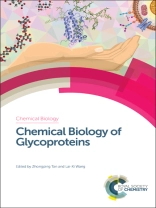Glycans play a vital role in modulating protein structure and function from involvement in protein folding, solubility and stability to regulation of tissue distribution, recognition specificity, and biological activity. They can act as both positive and negative regulators of protein function, providing an additional level of control with respect to genetic and environmental conditions.
Due to the complexity of glycosylated protein forms, elucidating structural and functional information has been challenging task for researchers but recent development of chemical biology-based tools and techniques is bridging these knowledge gaps. This book provides a thorough review of the current state of glycoprotein chemical biology, describing the development and application of glycoprotein and glycan synthesis technologies for understanding and manipulating protein glycosylation.
Spis treści
Introduction: General aspects of the chemical biology of glycoproteins;
Chemical biology of protein N-glycosylation;
Chemical biology of protein O-glycosylation;
Chemical biology of O-Glc NAc glycosylation;
Chemical synthesis and engineering of N-linked glycoproteins;
Chemoenzymatic synthesis of N-glycans;
Towards synthesis of heparan sulfate glycopeptides and proteoglycans;
Chemoenzymatic synthesis of low-molecular-weight heparin and heparan sulfate;
Synthetic studies of GPI-anchored peptides, glycoproteins and proteins;
Chemical approaches to imaging protein glycosylation;
Targeting glycans of HIV envelope glycoproteins for vaccine design;
Design, synthesis, and evaluation of mucin glycopeptide-based cancer vaccine;
Selective chemical glycosylation of therapeutic proteins












